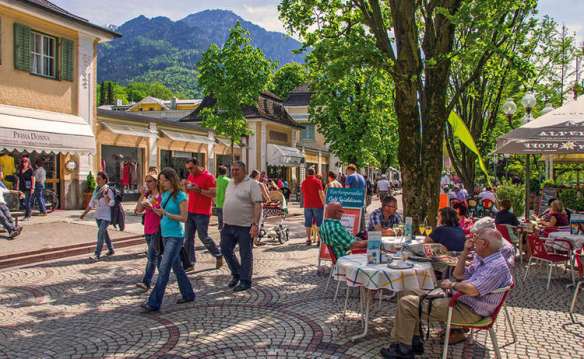
Since I arrived in Seattle I aim to discover the various neighborhoods of the city and spend some time walking the streets, enjoying hot beverages in cafés or food in restaurants. In neighborhoods like Ballard, Belltown and Capitol Hill there are many small bars and restaurants; lovely decorated and often privately owned offering seats outside during the summer months and inviting pedestrians to take a break from the hustle and bustle. Sitting at the table and drinking my espresso there was only one thing that bothered me. Directly next to the broad sidewalk the cars passed by continuously creating noise and air pollution. That was the moment when I wondered if there are larger pedestrian zones, free of traffic and surrounded by retail stores.
When travelling to a new city in Europe, the pedestrian zone is located very central, the “place to be” for shopping and usually close to many of the city’s sights. That’s why I was looking for something comparable and tripped over the pedestrian retail areas ordinance (Ordinance 124770). It was adopted by the City Council on May 11, 2015, and went into effect on June 15, 2015. A look at the map (www.seattle.gov/dpd/cs/groups/pan/@pan/…/dpds022272.pdf) which is released by the city shows the planned the future developments and the areas which are already considered as a pedestrian zone. For example, according to the map Pine and Pike Street in Capitol Hill are considered as pedestrian zones, so is “the Ave” (University Way). But as we all know, those areas have broad sidewalks but are not traffic free environments at all.
My idea for Seattle’s neighborhoods is more radical and suggests basically changing suitable streets to areas reserved for pedestrians and bikers. Let’s assume the section of Pine Street between Broadway and 15th Avenue is not a street anymore but a big area where people can rest, have a coffee or cold lemonade, sit together and chat and walk from store to store, from bar to bar, without being bothered by crossing cars. Trees and lawns are contributing to the environment which invites pedestrian to linger and creates a center for the surrounding neighborhood. I am convinced that the upside potential more than outweighs the slightly more complex traffic situation which can be targeted with tailored bypass solutions. Of course, the local retailers would benefit from the new retail hotspot, which creates customer frequency and probably results in higher revenues. Furthermore a pedestrian zone is encouraging more walking, biking, and transit use to and within neighborhood business districts by preserving and promoting active destinations. Given the trend that more and more people walk or bike to work, and the link rail which makes downtown more accessible without a car I think this is a great and cheap opportunity for a city to improve its residents quality of life.
